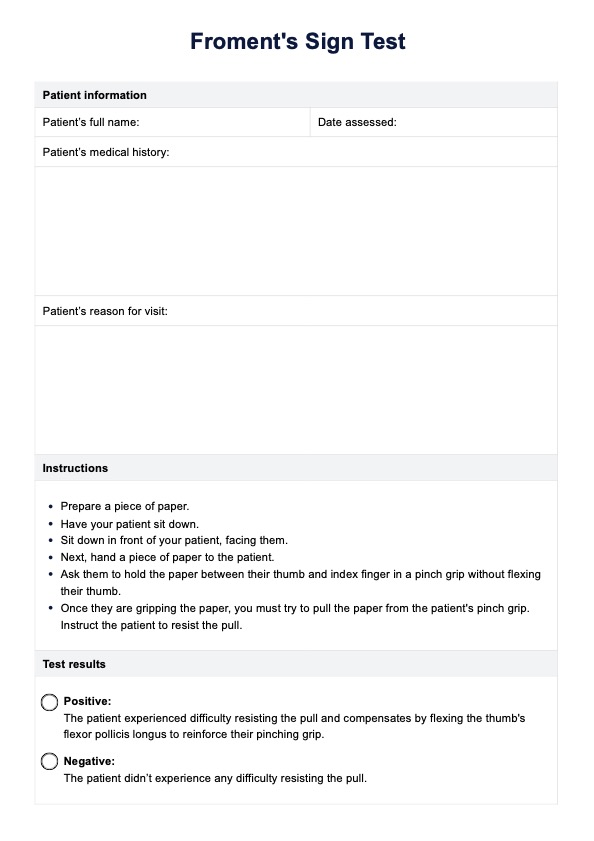It shouldn't. If there's pain, then an underlying problem is likely causing it.

Froment's Sign Test
Learn how to conduct the Froment's Sign Test to assess patients for ulnar nerve palsy.
Use Template
Froment's Sign Test Template
Commonly asked questions
No. It's a screening test. It can help with the diagnostic process but should not be relied on as the sole assessment for ulnar nerve palsy.
Common treatments include medications for pain relief and to prevent nerve spasms, hand splints to support hands and hopefully provide comfort, physical therapy to help restore strength in the thumb, wrist, and hand, and occupational therapy to prevent palsy or injury from getting worse.
EHR and practice management software
Get started for free
*No credit card required
Free
$0/usd
Unlimited clients
Telehealth
1GB of storage
Client portal text
Automated billing and online payments











